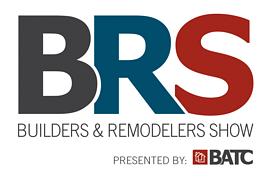Now Might Be a Good Time to Remodel How and Why You Do Marketing
 On April 2nd, 2015 I presented a half day marketing workshop titled "Choosing and Targeting the Right Customers and Projects Types for Your Business". The workshop was billed as the keynote session for the Builders Association of the Twin Cities (BATC) annual trade show in Minneapolis. At the workshop I shared new ways contractors can think about and do their marketing so they can attract their desired customer and job types. It’s what I call strategic marketing. For those of you who missed the workshop here are some of the key points we discussed at the workshop.
On April 2nd, 2015 I presented a half day marketing workshop titled "Choosing and Targeting the Right Customers and Projects Types for Your Business". The workshop was billed as the keynote session for the Builders Association of the Twin Cities (BATC) annual trade show in Minneapolis. At the workshop I shared new ways contractors can think about and do their marketing so they can attract their desired customer and job types. It’s what I call strategic marketing. For those of you who missed the workshop here are some of the key points we discussed at the workshop.
 Take advantage of the timing
Take advantage of the timing
The economy and residential construction are both picking up. At the same time the majority of attendees agreed with me in that we are not yet confident that the pace of the current surge will be sustainable considering the uncertainties businesses and consumers still have about the economy. With that in mind this is however a good time to take advantage of the surge to concentrate on developing market share in a strategic way. It’s my opinion that most contractors would benefit from becoming a specialist in what they do and how they do it. After all specialists typically command higher prices than generalists. And, true specialists are always in demand, even in down economic times. Now is a good time to specialize, as long as you also work on branding to establish and maintain your position as a specialist in your desired market areas.
Here are some specific tactics contractors can consider and use to strategically build market share
Pick your customers, don't let them pick you:
 Stop taking just any customers and jobs. Be selective about who you will let become your customers. For example why not only work with people who would say they are "working with" you, not those who would say you are "working for them". Also, be selective about the project types you go after. For example why not attract people who want high quality products. If you sell using one markup across all cost categories the gross profit dollars earned on material intensive projects due to higher price point products is an easier way to meet overhead and net profit goals, both now and in the future, particularly when compared to selling and producing labor intensive projects.
Stop taking just any customers and jobs. Be selective about who you will let become your customers. For example why not only work with people who would say they are "working with" you, not those who would say you are "working for them". Also, be selective about the project types you go after. For example why not attract people who want high quality products. If you sell using one markup across all cost categories the gross profit dollars earned on material intensive projects due to higher price point products is an easier way to meet overhead and net profit goals, both now and in the future, particularly when compared to selling and producing labor intensive projects.
Stop competing, differentiate:
Being different comes with pros and cons
If you decide to use these example strategies many prospects will go away. However, the ones that see value in your differences will become cogs in your new referral generating machine and will pre-sell the value of your differences to their referrals so you won't have to. I call those types of referrals "layups".
Think of how you do marketing in a new way
 The old traditional marketing methods of trying to find prospects who want your services now and interrupting them to get their attention no longer work. Today consumers are the ones deciding how they will find and qualify their project ideas as well as the contractor they will work with. Instead use inbound marketing tactics that help consumers find your business. This should be one of the two primary purposes of your marketing and can be accomplished on your web site using SEO tactics and good content on your site’s pages as well as your blog. The other primary purpose of your marketing, particularly at your web site, should be to help prospects decide if what you offer and how you do business are right for them. In other words your marketing should help them prequalify themselves so they either want to contact you or know they shouldn't.
The old traditional marketing methods of trying to find prospects who want your services now and interrupting them to get their attention no longer work. Today consumers are the ones deciding how they will find and qualify their project ideas as well as the contractor they will work with. Instead use inbound marketing tactics that help consumers find your business. This should be one of the two primary purposes of your marketing and can be accomplished on your web site using SEO tactics and good content on your site’s pages as well as your blog. The other primary purpose of your marketing, particularly at your web site, should be to help prospects decide if what you offer and how you do business are right for them. In other words your marketing should help them prequalify themselves so they either want to contact you or know they shouldn't.
Final Thought- Marketing shouldn't just be limited to creating leads
At the workshop I also shared one more new way to use your marketing; to advance the sales process. Consumers want to gather information and ideas about their project, but they want to be sure they are getting accurate and useful information. Savvy contractors are now using the content at their web sites to educate consumers before they call to setup an appointment with a contractor. This saves both the prospect and the contractor a lot of valuable time. In addition to offering project and product related information, you can also educate them about how and why you do business the way you do.  This can not only speed up the sales process, it can also help clearly differentiate your business and therefore improve the quality of your leads.
This can not only speed up the sales process, it can also help clearly differentiate your business and therefore improve the quality of your leads.


 Dealing with customers, subs and employees isn't always easy. All too often they can say and do things to us that can really strike a nerve. How you react in the situation can really make a statement about your professionalism as well as what they might actually share with others about your reactions.
Dealing with customers, subs and employees isn't always easy. All too often they can say and do things to us that can really strike a nerve. How you react in the situation can really make a statement about your professionalism as well as what they might actually share with others about your reactions. Now consider this example. If you asked a prospective lead carpenter you are considering hiring how he or she deals with stress or frustration on the job and they share that beating the snot out of a wood scrap with their 28 oz Estwing works best, would you hire him or her? I certainly wouldn't.
Now consider this example. If you asked a prospective lead carpenter you are considering hiring how he or she deals with stress or frustration on the job and they share that beating the snot out of a wood scrap with their 28 oz Estwing works best, would you hire him or her? I certainly wouldn't.
 In the design industry we have many challenges besides meeting the concerns, wants, and needs of our precious clients. Many businesses have resorted to marketing on the basis of something for free. It prompts clients to want what is offered for free, however, at the same time, causes the knee jerk reaction question to arise, “How can it be free, what’s the catch”?
This poses itself as one of the challenges most noteworthy; the honest perception of value that is created. For a certainty, most trends are to downplay, for market segmenting purposes, the true value of reputable trades or product.
In the design industry we have many challenges besides meeting the concerns, wants, and needs of our precious clients. Many businesses have resorted to marketing on the basis of something for free. It prompts clients to want what is offered for free, however, at the same time, causes the knee jerk reaction question to arise, “How can it be free, what’s the catch”?
This poses itself as one of the challenges most noteworthy; the honest perception of value that is created. For a certainty, most trends are to downplay, for market segmenting purposes, the true value of reputable trades or product.  To advertise something for “free” in reality means something else needs to recoup the costs related to the “free” product or service. This is, in all respects, “Bait and Switch” by offering something for free that really isn’t. Doing so may call into question being honest in our business dealings.
To advertise something for “free” in reality means something else needs to recoup the costs related to the “free” product or service. This is, in all respects, “Bait and Switch” by offering something for free that really isn’t. Doing so may call into question being honest in our business dealings. Lowest cost marketing is not being honest in business dealings, as it may not spell out the true reason something is less, or much less, as many products and services, on the surface, appear to be the same. The adage, “You Get What You Pay For”, is usually visited after the disappointment comes, once the bargain fails to meet the expectation and the delight for the savings is replaced by the sinking feeling, “I’ve been had again”. As designers, is this really the outcome we want our clients to experience, let alone, having to deal with it once exposed?
Lowest cost marketing is not being honest in business dealings, as it may not spell out the true reason something is less, or much less, as many products and services, on the surface, appear to be the same. The adage, “You Get What You Pay For”, is usually visited after the disappointment comes, once the bargain fails to meet the expectation and the delight for the savings is replaced by the sinking feeling, “I’ve been had again”. As designers, is this really the outcome we want our clients to experience, let alone, having to deal with it once exposed?

 The outside perception is what prospects come to think about your business by what they observe, much like looking at a picture.
The outside perception is what prospects come to think about your business by what they observe, much like looking at a picture.  In a lot of ways testimonials are like referrals. If contractors wait for them to happen they will get some referrals and some business. On the other hand, if contractors are proactive in causing them to happen and are strategic about causing the inside reality they include, contractors can get great customers and a lot more business.
In a lot of ways testimonials are like referrals. If contractors wait for them to happen they will get some referrals and some business. On the other hand, if contractors are proactive in causing them to happen and are strategic about causing the inside reality they include, contractors can get great customers and a lot more business.
 The architect either invites multiple contractors to bid on the project or gives the homeowner the names of 5 (or more) contractors to bid on the project, essentially setting up an auction. So 5 contractors and all their subs do free estimates for the chance to be the lowest bidder (biggest loser). Then when the home owner actually buys from a contractor they are the ones paying for all the free estimates that contractor did for the people who did not buy. I think it would be interesting to hear the reaction home owners might have if they knew they were paying for other home owners’ free estimates.
The architect either invites multiple contractors to bid on the project or gives the homeowner the names of 5 (or more) contractors to bid on the project, essentially setting up an auction. So 5 contractors and all their subs do free estimates for the chance to be the lowest bidder (biggest loser). Then when the home owner actually buys from a contractor they are the ones paying for all the free estimates that contractor did for the people who did not buy. I think it would be interesting to hear the reaction home owners might have if they knew they were paying for other home owners’ free estimates. Many architects take the plans too far before knowing if the customer can actually afford the project and or if the project can actually be built. I think this is one of the worst things architects do to their customers. Wouldn’t it make sense to make sure the there are no zoning issues and that the project and or the scope are realistic before spending the client’s money to bring the plans from concept to ready to apply for permit?
Many architects take the plans too far before knowing if the customer can actually afford the project and or if the project can actually be built. I think this is one of the worst things architects do to their customers. Wouldn’t it make sense to make sure the there are no zoning issues and that the project and or the scope are realistic before spending the client’s money to bring the plans from concept to ready to apply for permit? They over-design the project past the agreed budget without providing realistic insight about the additional costs. Again, assuming the architect agreed to design to a budget, refer to number 2 above. If the home owner asks for things and or the architect suggests things that will blow the agreed budget, shouldn’t the architect make the true price difference clear to the home owner first and ask if they will commit to increasing their budget before expanding the design and collecting bids from contractors?
They over-design the project past the agreed budget without providing realistic insight about the additional costs. Again, assuming the architect agreed to design to a budget, refer to number 2 above. If the home owner asks for things and or the architect suggests things that will blow the agreed budget, shouldn’t the architect make the true price difference clear to the home owner first and ask if they will commit to increasing their budget before expanding the design and collecting bids from contractors?


 Timeframe. It's difficult to nail this down but if you're considering a project similar to ones you've tackled in the past, provide a sample schedule. Note items that can slow things down or build in time to address them. There's nothing wrong with over-delivering by completing a project ahead of schedule because you foresaw potential problems that did not materialize.
Timeframe. It's difficult to nail this down but if you're considering a project similar to ones you've tackled in the past, provide a sample schedule. Note items that can slow things down or build in time to address them. There's nothing wrong with over-delivering by completing a project ahead of schedule because you foresaw potential problems that did not materialize.

 In my 28 years in the remodeling business I have seen many relationships go south between homeowner and contractor! All too often the homeowner is in a position where they don’t even know what they just purchased from their remodeler. Whose fault is this? The remodeler was not paid as a consultant so possibly inadequate time was spent creating a job scope and contract. And of course, the homeowner only wanted to know two things…when can you start and how much is it going to cost! The blame should be spread evenly. I have always wanted my clients to understand EXACTLY what they were purchasing and felt that educating them on the process would be win/win for everyone.
In my 28 years in the remodeling business I have seen many relationships go south between homeowner and contractor! All too often the homeowner is in a position where they don’t even know what they just purchased from their remodeler. Whose fault is this? The remodeler was not paid as a consultant so possibly inadequate time was spent creating a job scope and contract. And of course, the homeowner only wanted to know two things…when can you start and how much is it going to cost! The blame should be spread evenly. I have always wanted my clients to understand EXACTLY what they were purchasing and felt that educating them on the process would be win/win for everyone.

 When creating a project’s payment schedule use project milestones to determine when payments will become due. If when doing your estimate you list your tasks and related costs for each task in critical path order, you can then add up the marked up cost of each milestone’s tasks to make sure the amount collected for each payment will adequately finance each phase of the project. Then, add a little extra money to create a cushion of safety (front loading).
When creating a project’s payment schedule use project milestones to determine when payments will become due. If when doing your estimate you list your tasks and related costs for each task in critical path order, you can then add up the marked up cost of each milestone’s tasks to make sure the amount collected for each payment will adequately finance each phase of the project. Then, add a little extra money to create a cushion of safety (front loading). Also make it company policy that your contractor’s warranty starts at substantial completion of the project. Clarify however that no warranty work will be completed until the final project balance has been paid in full.
Also make it company policy that your contractor’s warranty starts at substantial completion of the project. Clarify however that no warranty work will be completed until the final project balance has been paid in full.

 Position Being There
Position Being There

 How many times in your career has a homeowners asked you for a “Ball Park” price for their project. And, how many times did your Ball Park price end up being nowhere close to the actual price of the project?
How many times in your career has a homeowners asked you for a “Ball Park” price for their project. And, how many times did your Ball Park price end up being nowhere close to the actual price of the project?  So why do prospects get offended when you tell them you charge for estimates? Did they expect you to work for free? Do they work for free at their jobs? I doubt it.
So why do prospects get offended when you tell them you charge for estimates? Did they expect you to work for free? Do they work for free at their jobs? I doubt it.  A point of clarification which should already be obvious
A point of clarification which should already be obvious





